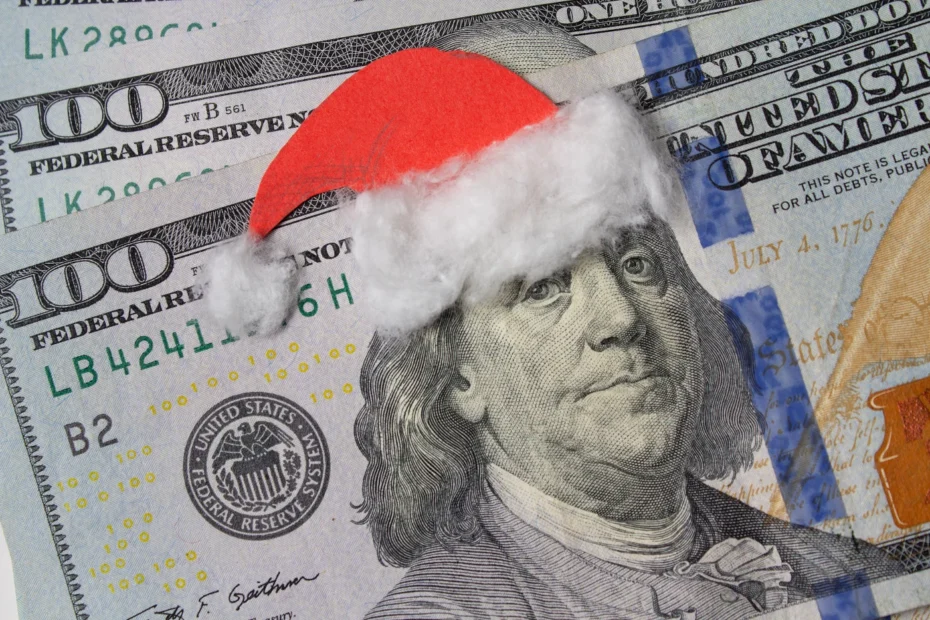As the Christmas season approaches, Americans find themselves caught in a dichotomy of sentiments regarding their spending habits and economic outlook All-America Economic Survey sheds light on this complex situation, painting a picture of both a green and a blue Christmas.
Americans Plan to Spend More Despite Economic Concerns
The survey indicates a green Christmas in terms of spending intentions, with 18% of respondents expressing their plans to spend more this holiday season. This marks an increase from 11% the previous year. On the positive side, there is a double-digit growth in average spending, attributed to a combination of inflation and higher incomes.
However, the optimism in spending plans stands in stark contrast to the blue sentiments prevailing about the economy. The survey reveals that Americans are decidedly downbeat on economic prospects, with only 15% expressing optimism for the present and the future. This marks a record high in the 17 years of conducting the survey, highlighting a significant shift towards pessimism among respondents.

Contradictions in Sentiment and Spending Data
This perplexing situation reflects the ongoing conflict between sentiment data, which remains depressed, and robust spending data. Despite the record-high pessimism, the American consumer seems undeterred, continuing to contribute to strong GDP growth and retail sales.
One key factor contributing to this discrepancy is the low unemployment rate, coupled with increased wages, especially for low and moderate-income earners. The theory presented is that analysts may have overemphasized the impact of government assistance on consumer spending, while underestimating the positive influence of employment and income growth.
Demographic Breakdown of Spending Trends
Analyzing the data further, the survey provides insights into which demographics are more inclined to spend this holiday season. Younger individuals, Democrats, and African-American adults show a higher inclination to spend, being more optimistic about the economy. This aligns with the narrative that these groups feel the positive effects of increased income.
The reasons cited for increased spending include being paid more (32%), the rising cost of goods (24%), and having more people to buy for. On the flip side, those spending less attribute it to the high cost of goods, highlighting the impact of inflation on consumer behavior. This aligns with the broader economic concerns expressed by respondents.
Economic Concerns and President Biden’s Approval Ratings
. The report, expected to be released in the 10 a.m. hour, will provide a detailed analysis of how economic concerns are influencing public opinion of President Biden.
The prevailing sentiment of pessimism, despite robust spending, raises questions about the sustainability of this trend. Analysts and economists have long predicted a consumer slowdown, but the consistent resilience of spending patterns challenges these forecasts.

Consumer Resilience and Confidence in Jobs
The resilience of the American consumer, as reflected in sustained spending, can be attributed to various factors. One crucial element is the positive growth in real or inflation-adjusted income, offering consumers more purchasing power. Additionally, the low unemployment rate and increased confidence in job security contribute to consumer optimism.
As the holiday season unfolds, observers and analysts will keenly watch whether this spending trend will extend beyond Christmas, providing insights into the broader economic trajectory. The mixed signals between sentiment and spending underscore the complexity of understanding consumer behavior in the current economic landscape.
Looking Ahead: Uncertain Economic Landscape
In conclusion, survey reveals a nuanced economic landscape as Americans approach the Christmas season. While plans for increased spending suggest a positive holiday for retailers, the undercurrent of economic concerns and record-high pessimism raises cautionary flags.
The divergence between sentiment and spending remains a puzzle, challenging conventional economic wisdom. As the nation navigates this complex landscape, the spotlight turns to policymakers and businesses to interpret these signals accurately and formulate strategies to address the underlying economic issues causing this dichotomy. The coming months will be crucial in determining whether the American consumer’s resilience will persist or whether the prevailing economic concerns will eventually influence spending patterns.
